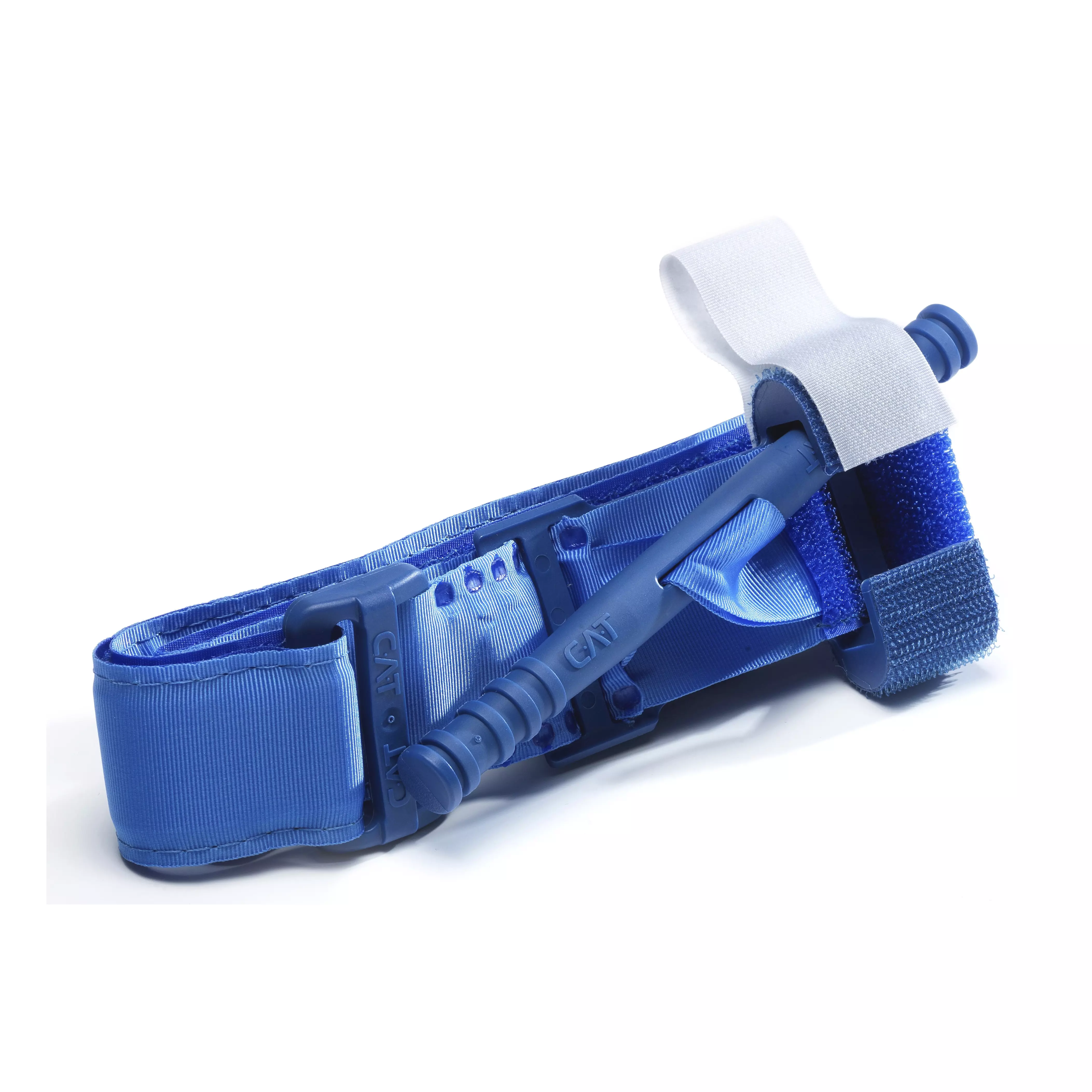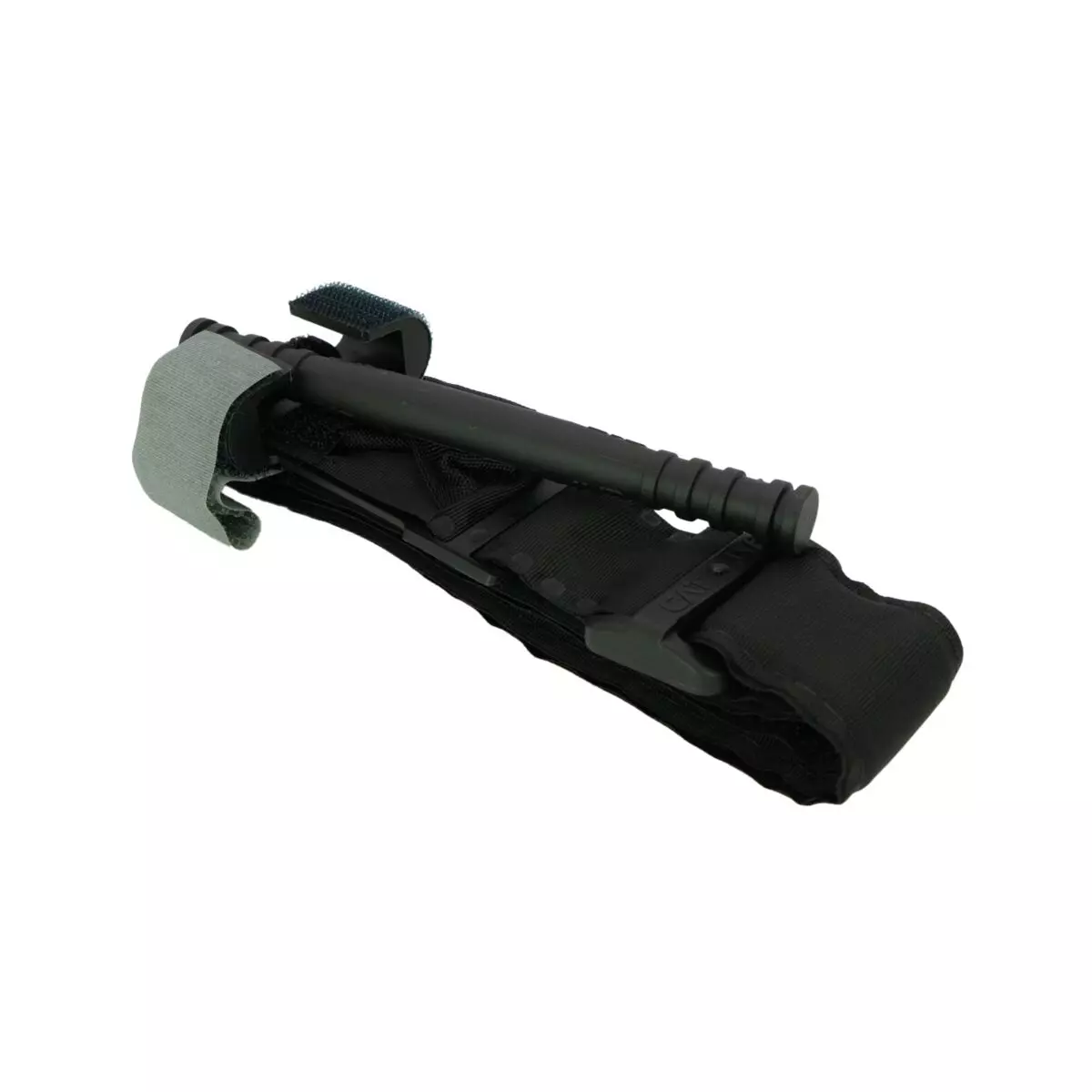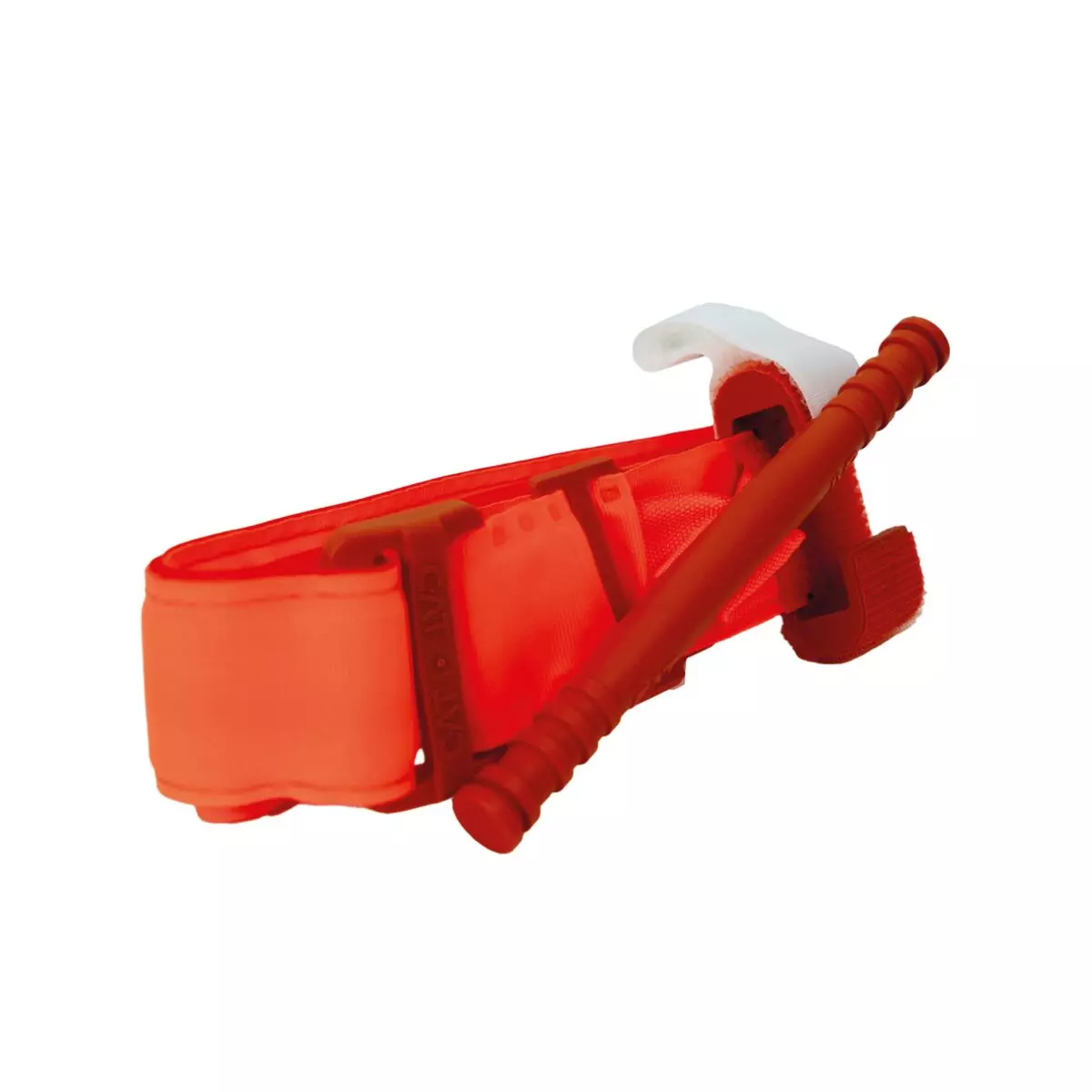10 mistakes to avoid when using a Tourniquet - the complete WERO Guide

1. Error: waiting too long before applying the tourniquet
In the case of critical limb haemorrhage, the elapsed time is directly related to the blood loss. If a tourniquet is only applied after all other haemostasis options have been exhausted, too much time may already have elapsed. It therefore makes more sense to use quickly if a serious injury with heavy bleeding is detected. This is the case, for example, in car accidents, industrial accidents, gunshot wounds or deep cuts to the arms or legs.
2. Mistake: Use of improvised tourniquets
The use of unsuitable aids instead of professional products is also a typical mistake. In most cases, aids such as a belt, scarf or item of clothing do not provide sufficient compression. This even applies if a gag is also used. The problem here is usually that unsuitable toggles such as pins or branches are used , which can break quickly or the improvised toggle is not properly secured so that it comes loose again. The use of improvised tourniquets should therefore only be used in extreme emergencies and only if you have mastered the technique of an improvised tourniquet. Accordingly, the following applies: No emergency kit should be without a tourniquet!
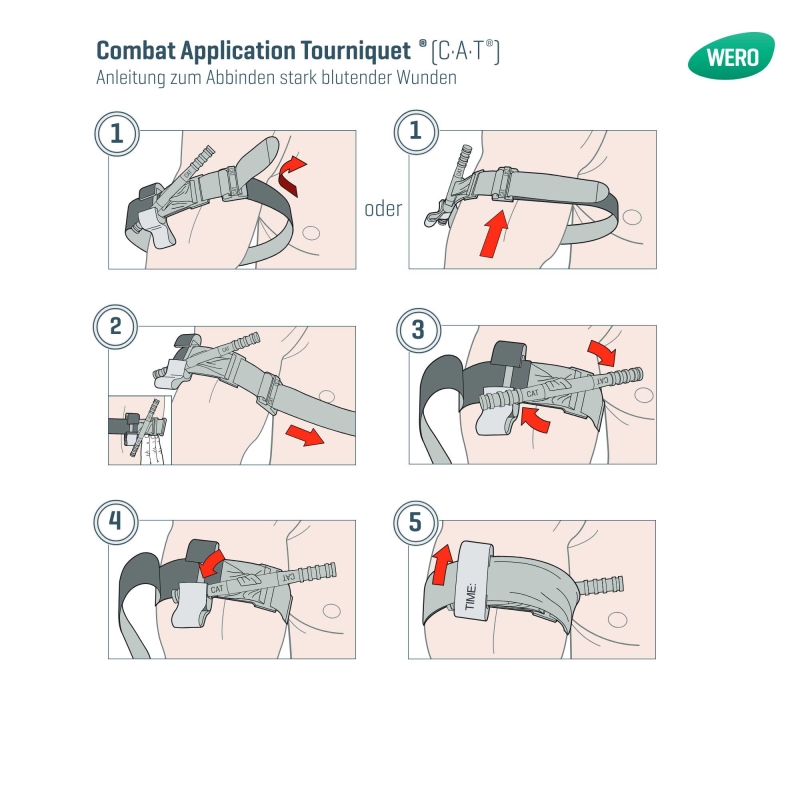
Available in 50 days, delivery time 1-3 days
Available, delivery time: 1-3 days
Available, delivery time: 1-3 days
3. Error: incorrect positioning of the tourniquet
The position of the tourniquet is also crucial to the success of the emergency measure. It is often placed too close to the wound . As a general rule, you can orientate yourself by the fact that should be at least a hand's width away from the wound. If the artery is torn off, it can retract into the limb. In such cases, a hand-width distance from the wound is sometimes not sufficient to cause compression of the artery. Furthermore, the position must not be chosen directly above the knee or elbow . Sufficient compression is not possible here.
4. Mistake: insufficient pretensioning during application
A tourniquet must be placed sufficiently tightly around the limb before the gag is applied. A Velcro fastener is usually used for this purpose. If you do not close it tightly enough, the gag will not be able to develop its full effect. The consequence of this is insufficient compression, which does not stop the blood loss. You should therefore ensure a sufficiently tight fit when putting it on. It should not be possible to get three fingertips between the tourniquet and the extremity.
5. Error: Tourniquet safety device is forgotten
All known tourniquet models have a safety device. This prevents the toggle from moving freely and the compression from being released again. It is therefore important to use the safety device after applying . A further complication of inadequate securing is that the injured person may loosen the gag themselves. As strong compression leads to pain , this reaction of an injured person is not unlikely. If the safety device has been applied, it provides sufficient protection against unintentional loosening of the gag.
6. Error: The tourniquet is positioned over a joint
If positioned over a joint, sufficient compression of the injured artery is not possible. A tourniquet must therefore not be positioned directly over the knee or elbow.
In addition to joints, clothing and equipment worn on the body can also pose a problem. Pockets filled with objects on the sleeve or trouser leg of clothing act as a buffer and reduce compression. They must be removed or emptied before donning.
7. Error: the tourniquet is not applied horizontally
A tourniquet is usually applied intuitively in a horizontal position on the injured extremity. Depending on the positioning, however, it is also possible to deviate from the ideal position. In the worst case, this can lead to subsequent slippage and renewed bleeding. If it is applied distally with a hand's breadth distance to the groin or armpit, the anatomical conditions automatically ensure a horizontal fit.
8. Mistake: open wounds are not dressed
A tourniquet application is no substitute for initial wound care at the accident site! Use a sterile wound dressing to prevent dirt and germs from entering the open wound. Such wound contamination can delay the healing process due to inflammation . As amputation injuries sometimes also lead to bleeding from the bone, further wound care is essential. To do this, apply a pressure bandage. It also helps to stop the bleeding and prevents bleeding from the injured bone. In addition to the wound dressing, you should also ensure that the injury is kept still. This promotes blood clotting and increases the chances of survival.
9. Error: temporary opening of the tourniquet
If an injured person is in severe pain or is possibly resisting the tourniquet, civilian first aiders tend to temporarily loosen or open the gag. However, this immediately leads to blood flow through the injured artery and quickly becomes life-threatening. On the other hand, it should also be noted that a tourniquet application is limited in time. A duration of up to two hours is unproblematic and has no health consequences. Longer applications should only be carried out in unavoidable emergencies, as this can have consequences.
10. Error: no tourniquet is carried in the emergency kit
In addition to incorrect tourniquet use, there is another fatal tourniquet error: it is missing from the emergency kit or is not placed within easy reach. This is because in the event of serious arterial injuries with high blood loss, rapid action is required and the necessary tools must always be in perfect condition and ready to hand.
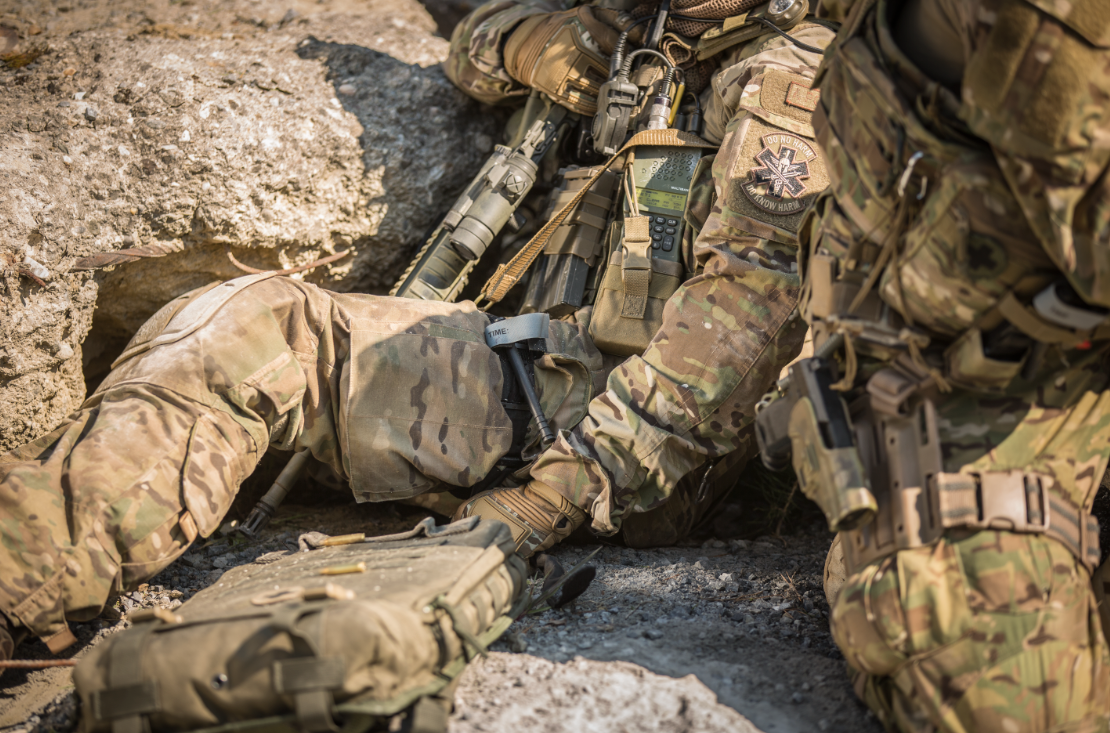
Conclusion
When used correctly, a tourniquet can prevent high blood loss through compression and thus save the life of a seriously injured person. Ideally, the tourniquet should be used by trained professionals who are familiar with the correct way to use it . However, in emergency situations, such as a road accident, even laypersons should not shy away from using a tourniquet if necessary!

